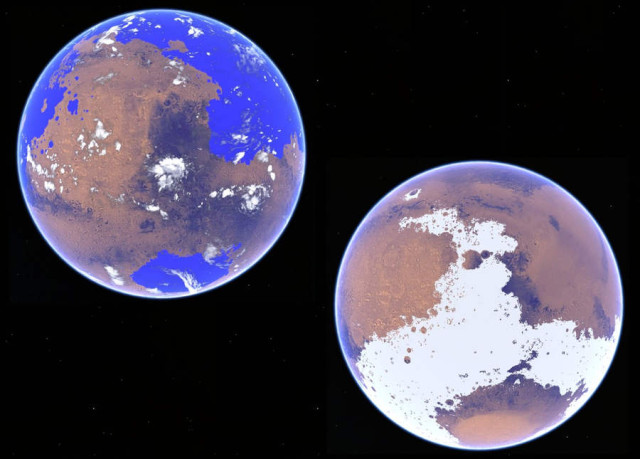A new study suggests that the seas of Mars may never have existed, instead the planet was cold and icy billions years ego.
Above: Conceptual rendition of the competing warm and cold scenarios for early Mars.
Credit Robin D. Wordsworth.
For decades, researchers have debated the climate history of Mars and how the planet’s early climate led to the many water-carved channels seen today. The idea that 3 to 4 billion years ago Mars was once warm, wet and Earth-like with a northern sea — conditions that could have led to life — is generally more popular than that of a frigid, icy planet where water is locked in ice most of the time and life would be hard put to evolve.
To see which early Mars better explains the modern features of the planet, researcher Robin Wordsworth of the Harvard Paulson School of Engineering and Applied Sciences and his colleagues used a 3-dimensional atmospheric circulation model to compare a water cycle on Mars under different scenarios 3 to 4 billion years ago, during what’s called the late Noachian and early Hesperian periods. One scenario looked at Mars as a warm and wet planet with an average global temperature of 10 degrees Celsius (50 degrees Fahrenheit) and the other as a cold and icy world with an average global temperature of minus 48 degrees Celsius (minus 54 degrees Fahrenheit).
via AGU News
source Harvard Paulson School






Leave A Comment